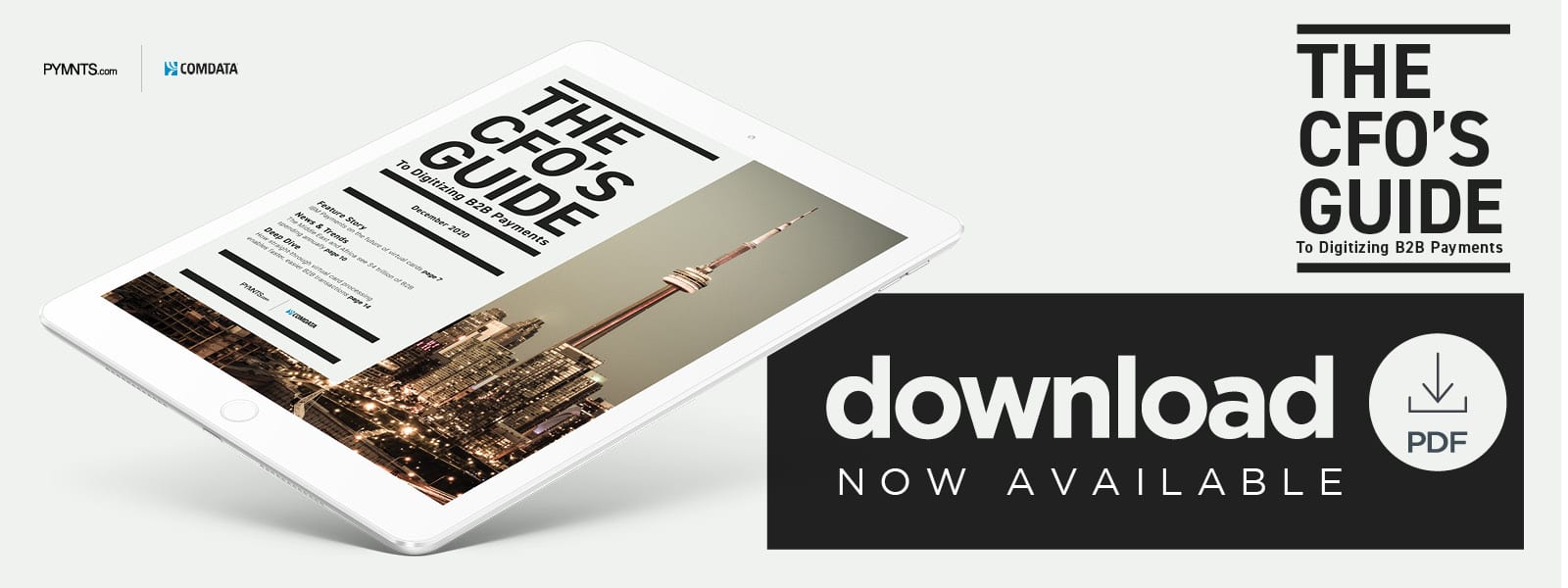Deep Dive: How Virtual Cards And Automated Processing Ease B2B Payments

A thriving commercial environment relies on sellers being able to trust that they will be paid when they provide goods and services, but myriad obstacles can impede the smooth transfer of B2B funds.
Buyers need to control costs to meet their payment promises, then leverage reliable methods to deliver the money. Sellers must be set up to seamlessly receive funds as well, lest they face painful cash flow interruptions. The pandemic has also introduced challenges into these accounts payable (AP) and accounts receivable (AR) practices and has aggravated existing vulnerabilities in how corporate buyers and sellers transact, leaving many companies struggling to identify methods that can save time and money.
Vendors and corporate buyers are now focused on streamlining their cash flows as they struggle with ongoing disruptions, and paper checks — staples in the B2B payments space — seem ill-suited to the task. Checks take time to reach their destinations via postal mail, and they can be costly to print and deliver in high volumes, some businesses report.
AP teams that have shifted to working from home are also likely to face more difficulties than ever in generating physical checks, and AR teams have put increasing importance on receiving payments on time. These strains are prompting companies to reexamine their transaction methods, and some firms say they believe that virtual cards could alleviate many of these frictions by letting buyers deliver payments rapidly and without handling or generating paper documents.
Virtual cards offer numerous benefits, but there are still hurdles preventing them from experiencing greater adoption. Suppliers may desire the swift transaction times that these cards provide but may be unable to easily accept and process them. Old-school AR methods can make receiving virtual card details somewhat cumbersome, thus eroding some of the speed and convenience these payment tools promise. Firms’ desires to improve virtual card acceptance can therefore drive demand for tools that enable automatic processing.
This month’s Deep Dive examines these issues and explores how virtual cards and straight-through virtual card processing could remove frictions from buyer-supplier payments.
Avoiding Overdue Payments
Buyers routinely fail to pay their vendors on time, and many that are facing budget issues during the pandemic have insisted on pushing back their payment deadlines. A multitude of fashion and textile retailers that had traditionally paid vendors within 60 days of receiving invoices reacted to disruptions during the pandemic’s early months by extending payment turnaround times to 120 or even 150 days, according to Nigel Lugg, United Kingdom Fashion and Textile Association chairman. Many vendors find overdue payments harmful during normal economic times, and such delays can turn fatal as they struggle to stay afloat during a crisis. A global study found that 61 percent of companies reported cash flow challenges in 2019, for example, and the pandemic is likely to have worsened this problem.
Virtual card payments could resolve tensions for companies that previously relied on paper checks. Mailed checks take several days or longer to reach vendors, but physical transit times do not apply to virtual cards, and their more rapid fund delivery timeline can be critical to helping suppliers maintain their cash flows.
Reducing Buyers’ Costs, Pains
Digital credit cards can also be helpful for buyers’ flexibility and budgets. Such solutions allow them to promptly pay vendors while keeping more money in their own bank accounts — at least until the bills become due. This enables corporate buyers to maintain more liquidity and effectively extend their payment timelines without burdening suppliers.
AP teams may also be eager to use virtual cards because they can avoid the costs of purchasing stamps, envelopes, check printers and other supplies involved in paper-based payments. Printing and delivering a single paper check may not cost much, but such expenses can quickly mount for companies that make many payments.
Firms appear to recognize the advantages of swapping out paper checks for virtual cards. A study found that the portion of companies that make at least half their supplier payments via paper checks has dropped 7 percent since the pandemic began, for example. A 2019 PYMNTS poll of executives — most of whom were in AP and accounting departments — found that 22.9 percent listed virtual cards among their most desired AP innovations.
Easing Adoption With Automated Processing
Virtual cards may give buyers the payment deadline leeway to better manage their working capital while enabling suppliers to quickly receive funds and maintain their cash flows, but inconvenient card processing experiences could detract from these benefits and stall greater adoption. Vendors need easy, quick ways to receive and process virtual card details or they will struggle to match these payments to orders and be forced to allot staff time to accepting and reconciling these transactions. Some buyers may try to fax or email virtual card numbers to their suppliers, but this can require the latter to sort through their email inboxes or paper documents to find necessary details. It also means vendors’ staff must manually input card details into their AR systems, which can be time-consuming.
Technologies that make it quick and easy for vendors to accept and reconcile virtual card payments can encourage them to use these tools, however. Third-party payments platforms that enable suppliers to abandon manual card processing for straight-through processing may reduce operational burdens and make it simpler for firms to transition to using this payment method.
Various frictions affect B2B payments, and sluggish timelines and costly transaction methods have proven particularly frustrating to firms trying to weather the pandemic. Replacing paper check transactions with those that use virtual cards could alleviate many of these strains, but vendors first require technological setups that allow them to easily handle the new payment method. Platforms and tools that support automated virtual card processing may ultimately be critical to getting businesses to adopt the technology.

